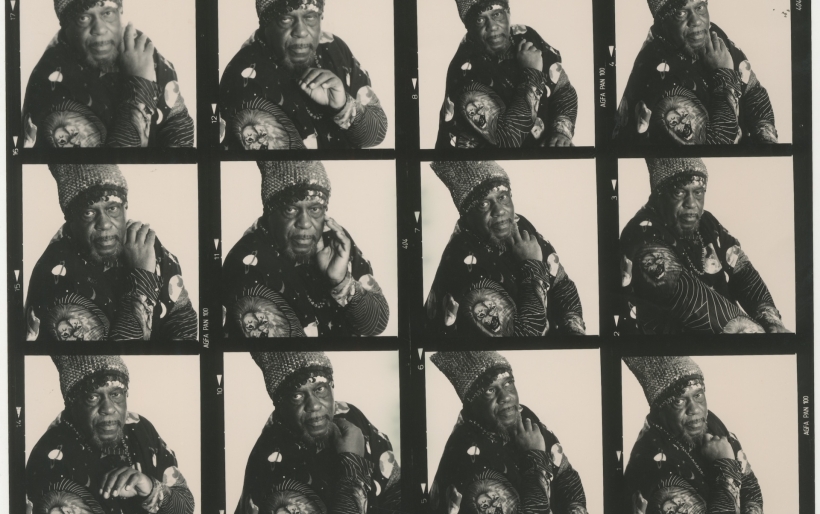About a third of the way through the 1974 cult classic film Space Is The Place, jazz innovator and futurist Sun Ra travels from outer space to a community center in Oakland. Dressed in one of his characteristic gowns and a golden headdress, Ra greets the kids in the community center and immediately gets roasted.
“Why are yo’ shoes so big?” “How do we know you’re for real?” “How do we know you ain’t somebody off Telegraph [Ave.]…some ol’ hippie or something?”
Ra returns the kid’s jokes with a revelation that doubles as a statement of purpose: “I came from a dream that the Black man dreamed long ago. I’m actually a present sent to you by your ancestors.”
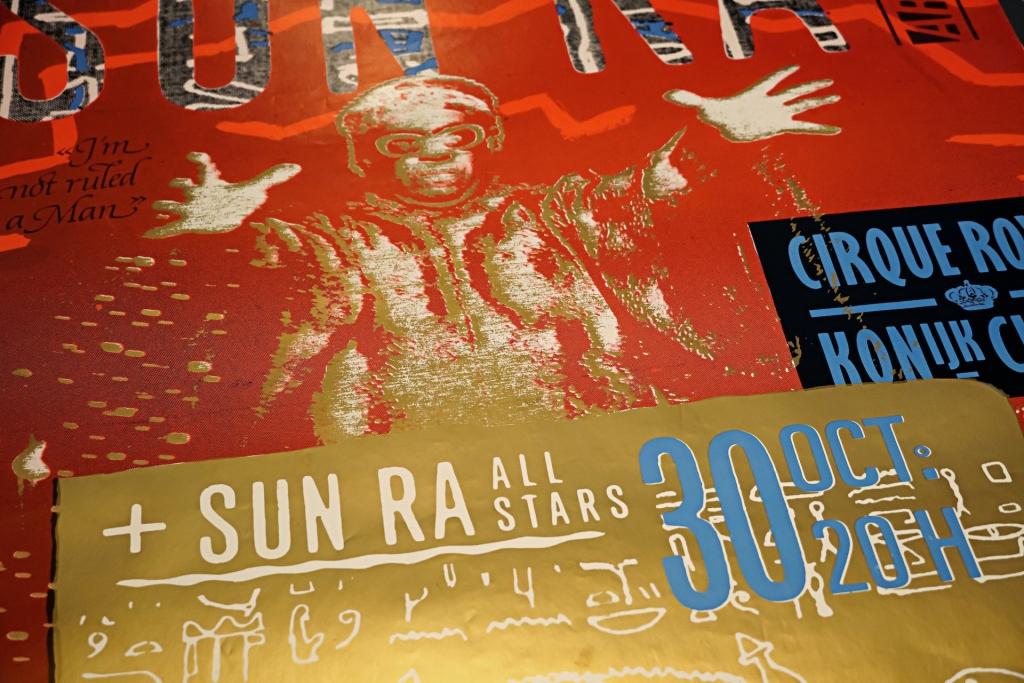
Poster promoting Sun Ra Arkestra with his All-Star Band at the Cirque Royal in Brussels | courtesy of University of Pennsylvania Libraries
History is not just a collection of events that happened in the past. History is our understanding of those events and how they’ve shaped our world today. In a way, Sun Ra’s mythos, philosophy and aesthetic was in constant dialogue with history. This dialogue can be found in the way his Arkestra preserved and re-contextualized the great Black musical systems of the past: Big Band, Stride, Bebop, and more.
Even the clothes that Sun Ra and his Arkestra wore on stage were callbacks to the colorful and ornate attire of Egyptian royalty. By taking these older cultural elements and re-imagining them through a futurist lens, Sun Ra acted as a living bridge between what was and what can be. 30 years after his death, that bridge is maintained in the music, art, poems and philosophy that he left behind.
Seeing as how Sun Ra’s work is inextricably linked to the past, it makes perfect sense that he would be the subject of an exciting new archival project at the University of Penn. In October, the University of Penn Libraries announced that they had acquired two collections of rare Sun Ra-related material. The collections include the research file of jazz historian John Szwed, author of the definitive Sun Ra biography: Space is the Place: The Lives and Times of Sun Ra, and a collection acquired from archivist Johan Kugelberg of New York’s famed Boo-Hooray gallery.
Housed in the Jay I. Kislak Center for Special Collections, Rare Books and Manuscripts on Penn’s campus, these collections include dozens of magazines, video, 15 audio cassettes of radio programs, (including shows aired on WXPN), and unrecorded compositions and arrangements. It’s an impressive collection that speaks to the breadth and depth of Sun Ra’s life and career.
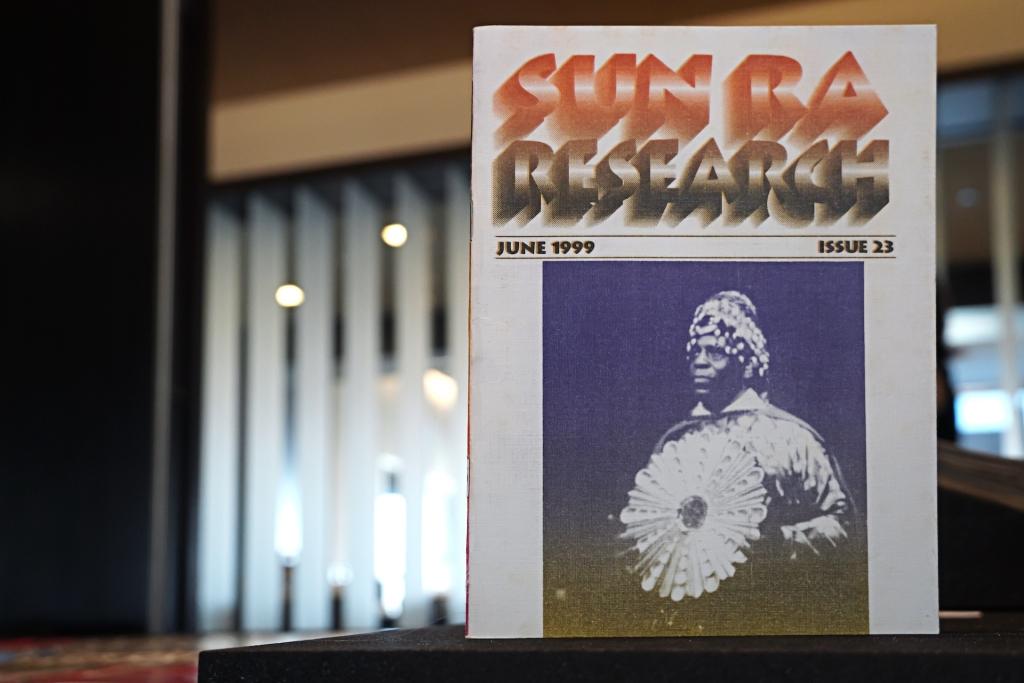
Sun Ra Research, Issue 23 (June 1999) | courtesy of University of Pennsylvania Libraries.
On Thursday, December 21st, I visited Penn’s campus to meet with Samantha Hill, the Curator of Civic Engagement at the Kislak Center. Hill’s excitement about the archive is palpable as she shows me the gorgeous photos, posters, album covers and poetry selections housed in the archive. As with the other collections in the Kislak Center, the Sun Ra archive is available for researchers and enthusiasts to visit and explore. “We’d love to get the word out that this is accessible to people and that they can come here and explore it,” says Hill. “All you need to do is show your ID.”
As we poured through the dizzying collection of Sun Ra-related materials, it felt like each artifact was a small part of a bigger, vibrant history. Although Sun Ra left planet Earth in 1993, his Arkestra has been active since its founding in 1952. The words, images and artifacts contained in the archive at Penn are a powerful and vital reflection of the last seven decades of music and culture.
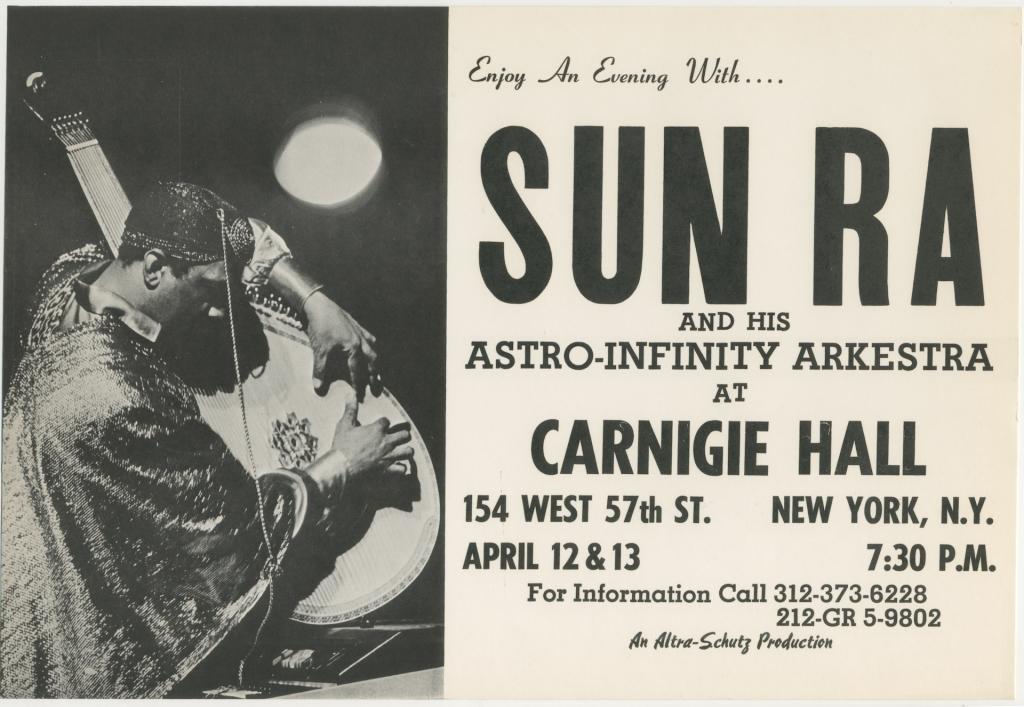
Enjoy an Evening with Sun Ra and His Astro-Infinity Arkestra at Carnegie Hall flyer. April 12 & 13, 1968. Altra0Schutz Production. 14 ¼ x 9 ¾ in. Kislak Center for Special Collections, Rare Books and Manuscripts; University of Pennsylvania Libraries.
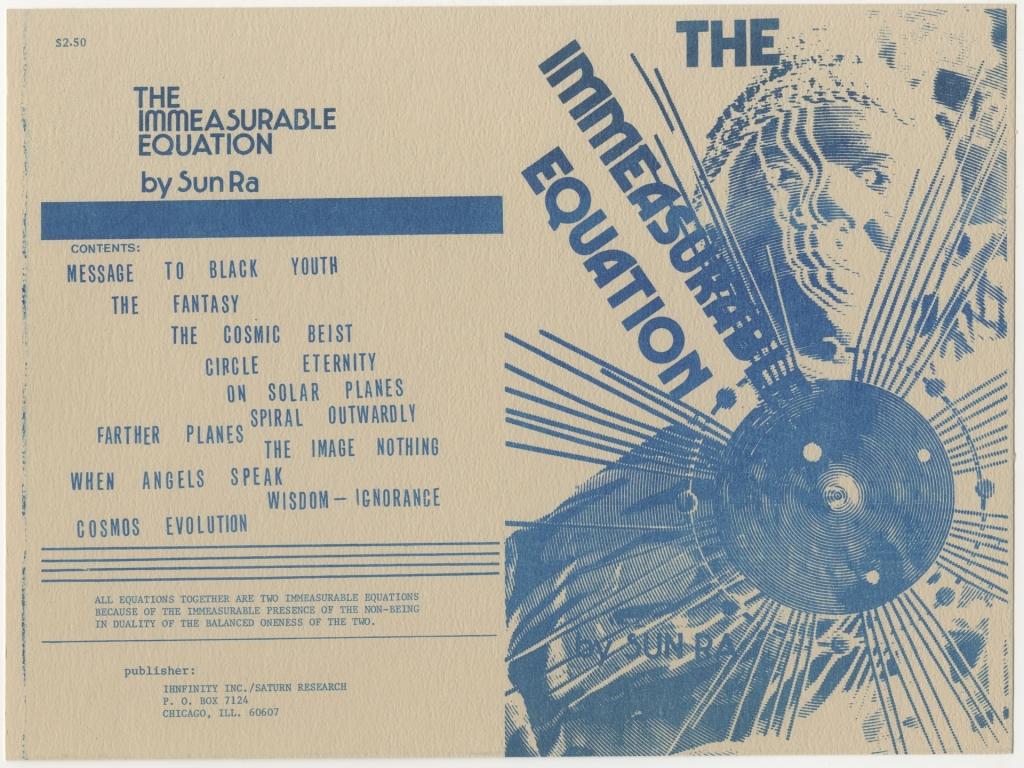
The Immeasurable Equation by Sun Ra wrap, screenprinted in blue ink on grey paper stock. 8½ x 11 in. Unfolded alternate cover design for Sun Ra poetry book. Chicago: Ihnfinity Inc/Saturn Research, ca. 1972. Kislak Center for Special Collections, Rare Books and Manuscripts; University of Pennsylvania Libraries.
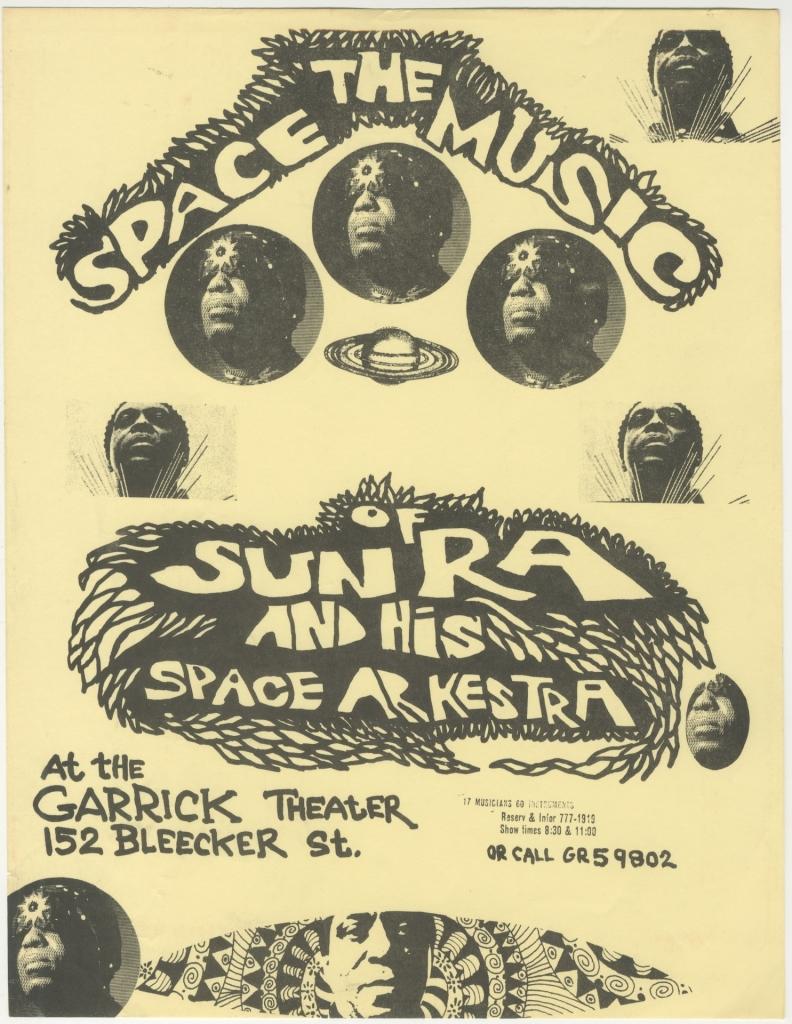
The Space Music of Sun Ra and his Arkestra at the Garrick Theater. 8 ½ x 11 in. Flyer for Sun Ra performance on Bleecker St. ca. 1960s. Kislak Center for Special Collections, Rare Books and Manuscripts; University of Pennsylvania Libraries.
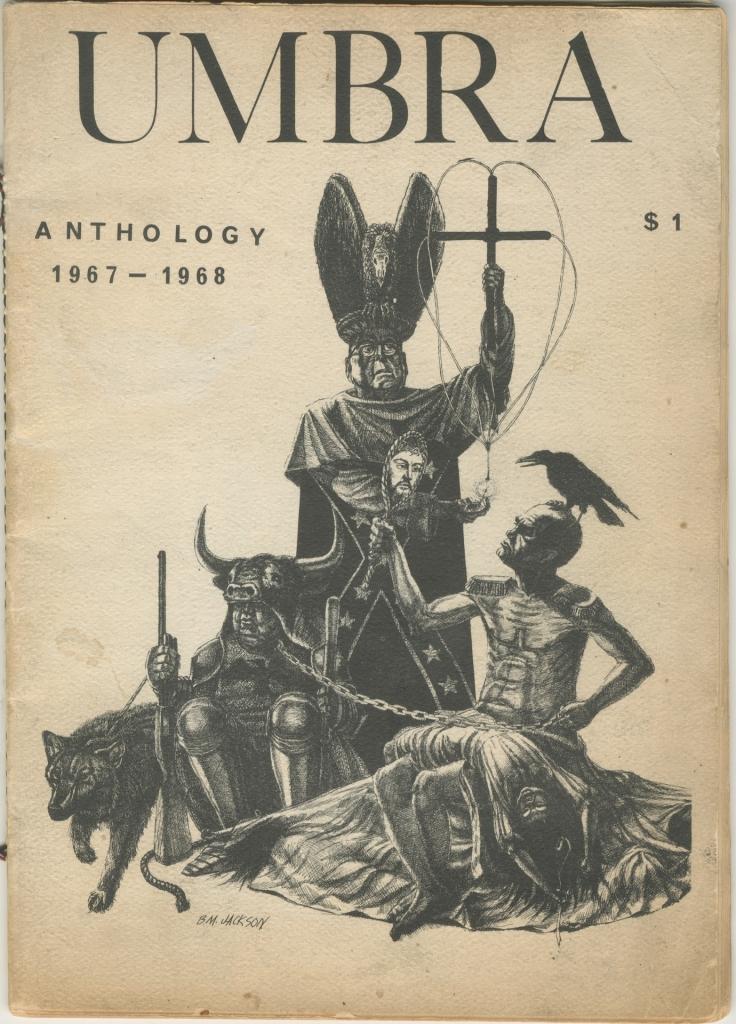
Umbra Anthology 1967 – 1968. New York, NY: Society of Umbra, 1967. Edited by David Henderson. Sewn bound in illustrated wraps. 70pp. 7 x 10 in. Kislak Center for Special Collections, Rare Books and Manuscripts; University of Pennsylvania Libraries.
